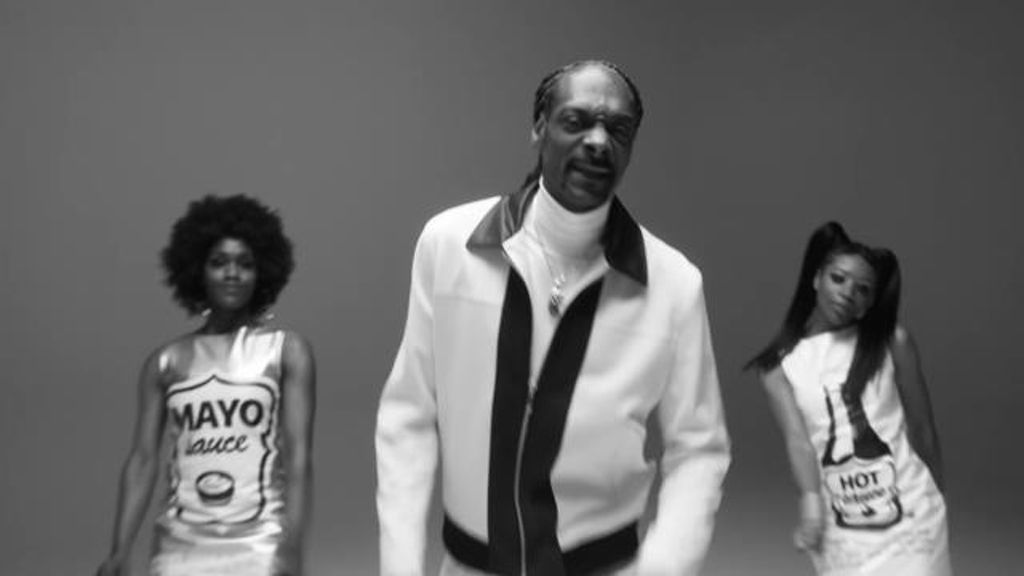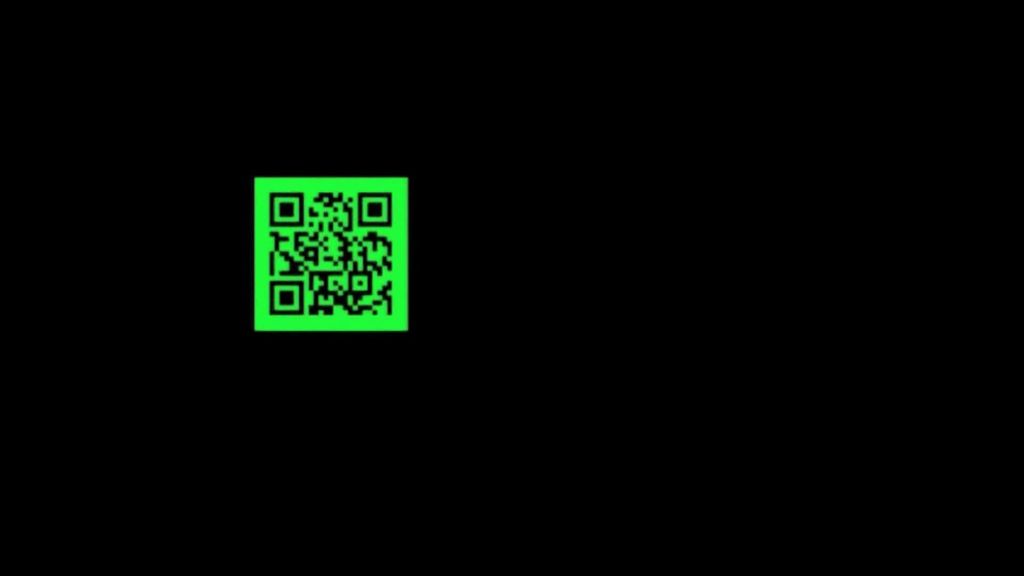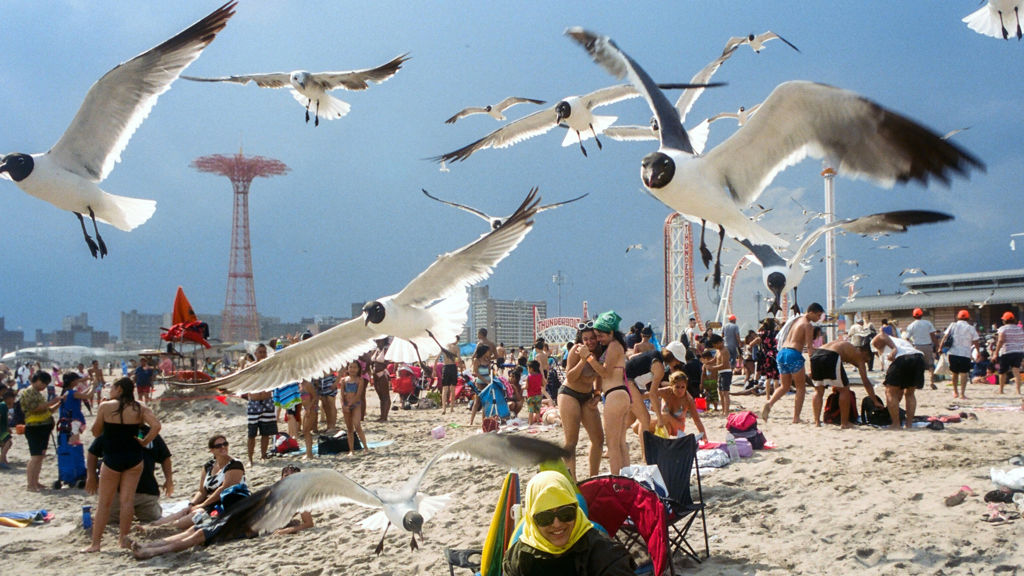Are we standing on the shoulders of giants, or stealing from them?
Is there such a thing as a new idea? Molly Tappin, Associate Creative Director at Jungle Creations, examines how advertising continually references itself and why repurposing, reusing and recycling isn't always a bad thing, you just need to know where to draw the line.
What is an original idea? Is it a concept forged in the vacuum of one person’s mind? A cognitive fingerprint which only their specific selection of synapses could summon? Or is it something which evolves as it passes through each new person?
Mark Twain would tell you that original ideas are hard to come by - because they don’t exist: “There is no such thing as a new idea. It is impossible. We simply take a lot of old ideas and put them into a sort of mental kaleidoscope.”
Creativity is all about collecting and connecting the dots, and sharing them with the world.
Creativity is all about collecting and connecting the dots, and sharing them with the world. Inspiration is all around us. Watching TV, listening to music, scrolling through social media, going travelling or even for a walk around the local park; all are engaging experiences and environments that can spark a great idea.
Credits
powered by
- Agency McCann/London
- Production Company Riff Raff
- Director Francois Rousselet
-
-
Unlock full credits and more with a Source + shots membership.
Credits
powered by
- Agency McCann/London
- Production Company Riff Raff
- Director Francois Rousselet
- Producer Amos Usiskin
- Editing Final Cut/London
- Post Production The Mill/London
- Music String and Tins
- Sound Designer/Composer Adam Smyth
- Producer Eimear Gorey
- Executive Producer Matthew Fone
- Executive Producer Natalie Arnett
- Producer Cathy Hood
- Production Supervisor Ben Oswald
- DP Xiaolong Liu
- Production Designer Jeff Higinbotham
- Art Director Michael Martella
- Choreographer Fatima Robinson
- Editor Amanda James
- Editor Douglas Flockhart
- VFX Lead Alex Lovejoy
- Post Producer Ryan Hancocks
- Colourist Jean-Clement Soret
- Animator Kasia Nalewajka
- Chief Creative Officer Robert Doubal
- Chief Creative Officer Laurence Thompson
- Chief Production Officer Sergio Lopez
- Creative James Crosby
- Creative Will Cottam
- Creative Director Rob Webster
- Creative Director Alexei Berwitz
- Head of Integrated Production Sophie Chapman-Andrews
- Producer Jacob Gardner
- Senior Producer Gabrielle Flanagan
- Talent Calvin Broadus Jr (Snoop Dogg)

Credits
powered by
- Agency McCann/London
- Production Company Riff Raff
- Director Francois Rousselet
- Producer Amos Usiskin
- Editing Final Cut/London
- Post Production The Mill/London
- Music String and Tins
- Sound Designer/Composer Adam Smyth
- Producer Eimear Gorey
- Executive Producer Matthew Fone
- Executive Producer Natalie Arnett
- Producer Cathy Hood
- Production Supervisor Ben Oswald
- DP Xiaolong Liu
- Production Designer Jeff Higinbotham
- Art Director Michael Martella
- Choreographer Fatima Robinson
- Editor Amanda James
- Editor Douglas Flockhart
- VFX Lead Alex Lovejoy
- Post Producer Ryan Hancocks
- Colourist Jean-Clement Soret
- Animator Kasia Nalewajka
- Chief Creative Officer Robert Doubal
- Chief Creative Officer Laurence Thompson
- Chief Production Officer Sergio Lopez
- Creative James Crosby
- Creative Will Cottam
- Creative Director Rob Webster
- Creative Director Alexei Berwitz
- Head of Integrated Production Sophie Chapman-Andrews
- Producer Jacob Gardner
- Senior Producer Gabrielle Flanagan
- Talent Calvin Broadus Jr (Snoop Dogg)
Above: Did JustEat's campaign stem from a repurposing of the classic radio jingles everyone knows and loves?
But the process for creating something ‘new’ is evolving too. AI and machine learning tools like DALL-E - a neural network that produces interesting, unexpected images from text prompts alone - is just one example of how technology is augmenting our creative potential. But it does raise some difficult questions around creative ownership.
Repurpose, reuse, recycle
There is an unwritten rule in the creative industry; taking inspiration from an idea is one thing, using a carbon-copy and pitching it as your own is another. Younger, fresher creatives can sometimes feel pressure to prove themselves, they feel responsible to try and reinvent the wheel.
Taking inspiration from an idea is one thing, using a carbon-copy and pitching it as your own is another.
Some of the best ads in recent memory are the ones that piggyback on other campaigns. JustEat’s three year partnership with Snoop Dogg spawned dozens of television adverts, but did its success stem from repurposing the classic radio jingles everyone knows and loves? And, similarly, was Citroen’s Transform campaign a hit thanks to taking inspiration from Transformers?
Recycling an idea and repacking it in a unique way takes skill. But where does inspiration end and intellectual theft begin? Coinbase broke the internet earlier this year with its Super Bowl ad, a play on the classic bouncing DVD logo. The simple concept struck a chord with audiences - the app’s mobile installations increased by 309% week-over-week after airing, with a further 286% climb the following day.
It has been suggested that the idea was pitched by another agency - an agency that received neither credit nor compensation. If true, this would be where we cross the line from inspiration to theft.
Credits
powered by
Unlock full credits and more with a Source + shots membership.
Credits
powered by
- Agency Accenture Interactive/New York
- Post Production/Graphics The Mill/New York
- Music Supervision/Mix Walker
- Chief Creative Officer Neil Heymann
- Creative Director Jason Kreher
- Executive Producer Leah Donnenberg

Credits
powered by
- Agency Accenture Interactive/New York
- Post Production/Graphics The Mill/New York
- Music Supervision/Mix Walker
- Chief Creative Officer Neil Heymann
- Creative Director Jason Kreher
- Executive Producer Leah Donnenberg
Above: Coinbase's Super Bowl spot from earlier this year was a direct reference to the old screensaver animations.
Lighting the creative beacons
The creative industry is built on the shoulders of giants. We are fans as much as creators, sharers and watchers, and there is nothing wrong with paying homage to someone else’s work. I would love to meet the person behind The New York Times’ The Truth Is Essential campaign, a campaign which inspires me to this day. Its mesmerising editing style - which used a list of simple, factual statements based on the publication’s reporting - cleverly put misinformation surrounding Covid-19 under the microscope.
Ideas are subjective and what one person considers stealing, another would argue is simply drawing inspiration.
Similarly, if someone came up to me and said, “I loved the campaign you ran, it really inspired me,” I wouldn’t be angry or disappointed. I would be thrilled that my idea had encouraged and influenced someone else. Creatives are going to increased lengths to try and protect their intellectual property (IP) with one French agency going as far as to suggest that people turn their unsold ideas and pitches into NFTs. But this level of enshrinement will only stifle creativity, both now and in the future.
Credits
powered by
- Agency Droga5/New York
- Production Company Somesuch/USA
- Director Kim Gehrig
-
-
Unlock full credits and more with a Source + shots membership.
Credits
powered by
- Agency Droga5/New York
- Production Company Somesuch/USA
- Director Kim Gehrig
- Art Director Jackie Moran
- Associate Producer Connor Hagan
- Chief Creative Officer Tim Gordon
- Chief Creative Officer Felix Richter
- Copywriter Ben Brown
- Creative Chairman David Droga
- Group Creative Director Laurie Howell
- Group Creative Director Toby Treyer-Evans
- HP Ruben Mercadal
- Music Supervisor Mike Ladman
- Senior Producer Forrest Holt
- Executive Producer Nicky Barnes
- Editorial Company Trim
- Editor Tom Lindsay
- Editing Cosmo Street/Los Angeles
- Post Production Company Method Studios/Los Angeles
- Executive Producer Bennett Lieber
- VFX Producer Kristin Engdahl
- Flame Artist Warren Paleos
- Mix Wave Studios/USA
- Sound Designer/Audio Mixer Aaron Reynolds
- Executive Producer Vicky Ferraro
- Colorist Luke Morrison
- Producer Saul Germaine
- Animator Matt Eller
- Senior Producer Brandon Chen

Credits
powered by
- Agency Droga5/New York
- Production Company Somesuch/USA
- Director Kim Gehrig
- Art Director Jackie Moran
- Associate Producer Connor Hagan
- Chief Creative Officer Tim Gordon
- Chief Creative Officer Felix Richter
- Copywriter Ben Brown
- Creative Chairman David Droga
- Group Creative Director Laurie Howell
- Group Creative Director Toby Treyer-Evans
- HP Ruben Mercadal
- Music Supervisor Mike Ladman
- Senior Producer Forrest Holt
- Executive Producer Nicky Barnes
- Editorial Company Trim
- Editor Tom Lindsay
- Editing Cosmo Street/Los Angeles
- Post Production Company Method Studios/Los Angeles
- Executive Producer Bennett Lieber
- VFX Producer Kristin Engdahl
- Flame Artist Warren Paleos
- Mix Wave Studios/USA
- Sound Designer/Audio Mixer Aaron Reynolds
- Executive Producer Vicky Ferraro
- Colorist Luke Morrison
- Producer Saul Germaine
- Animator Matt Eller
- Senior Producer Brandon Chen
Above: Tappin feels inspired by The New York Times’ The Truth Is Essential campaign.
Ideas are subjective and what one person considers stealing, another would argue is simply drawing inspiration. We may not have a set-in-stone rulebook to guide us on the definition of what constitutes an original idea, but what we do have is a line in the sand, one that shouldn’t be crossed.
The wheel is already there, don’t feel the need to try and change the way it spins.
DALL-E is but one in a sea of tech-based tools making waves in our industry. But, whilst these can effectively execute creative ideas, they lack the ability to develop a narrative. Creatives should focus on storytelling, connecting dots in their own unique way.
The wheel is already there, don’t feel the need to try and change the way it spins.
)













